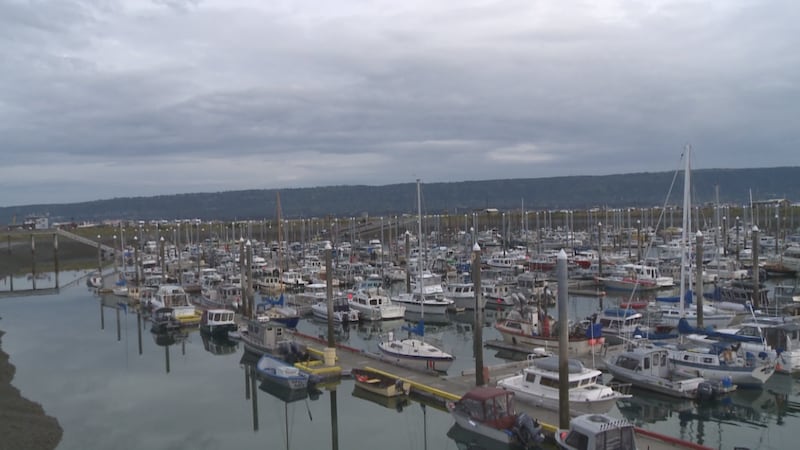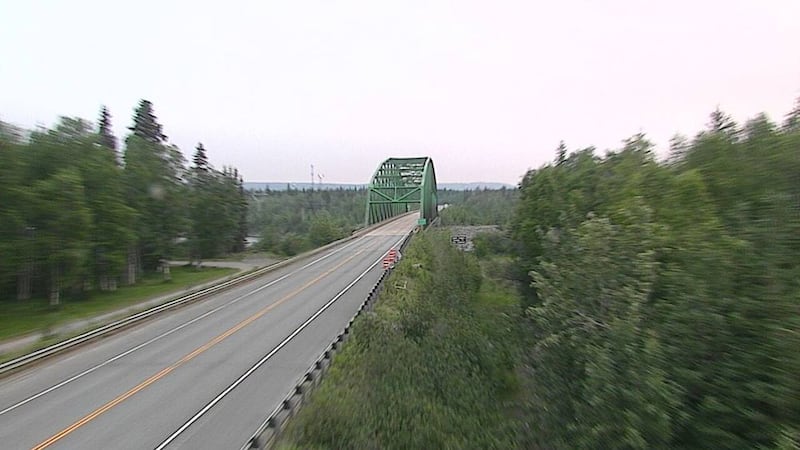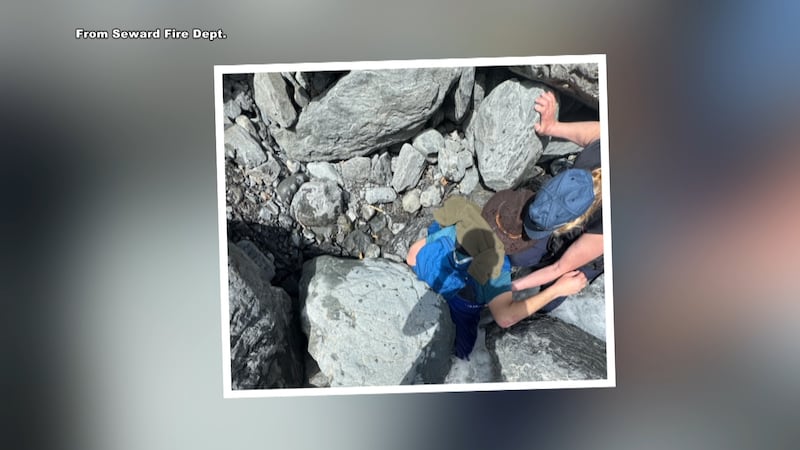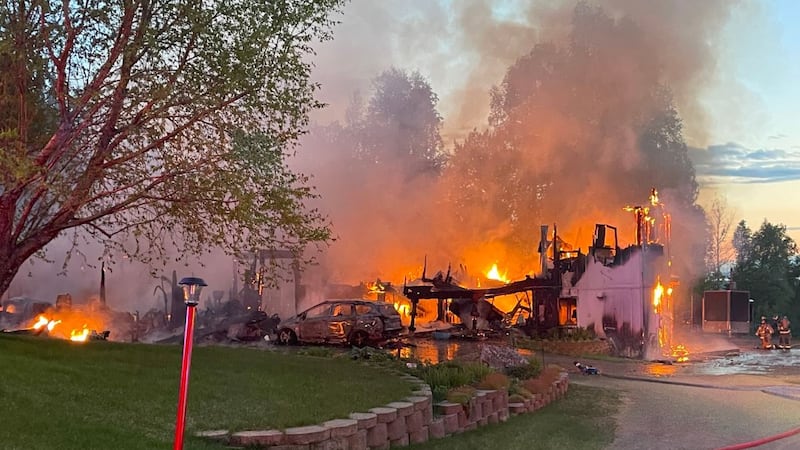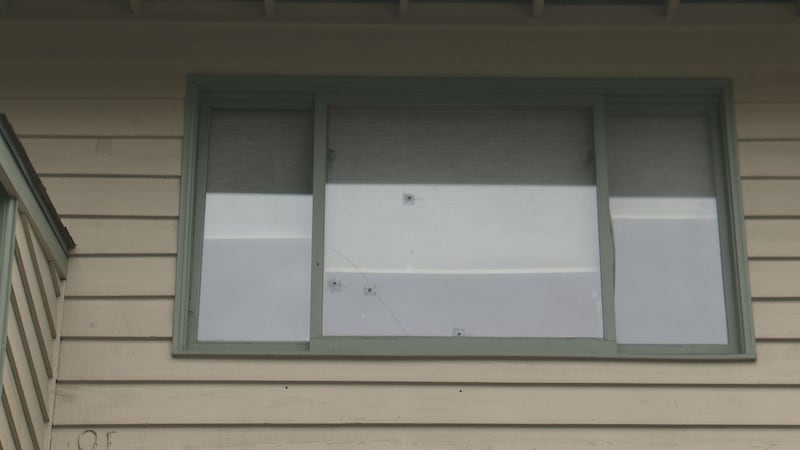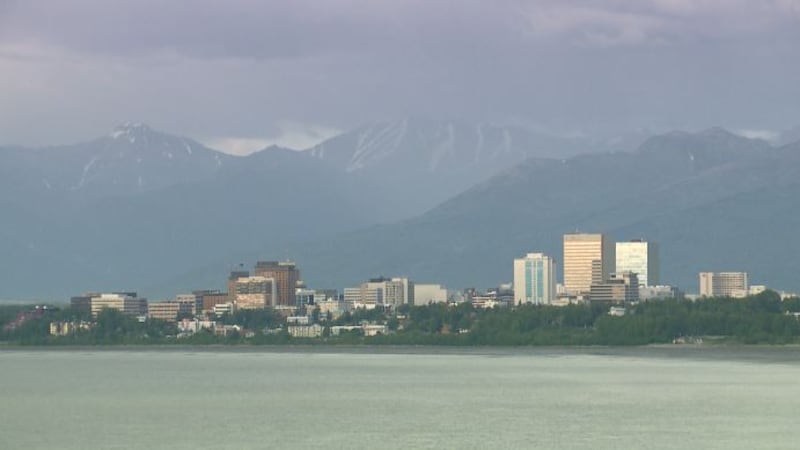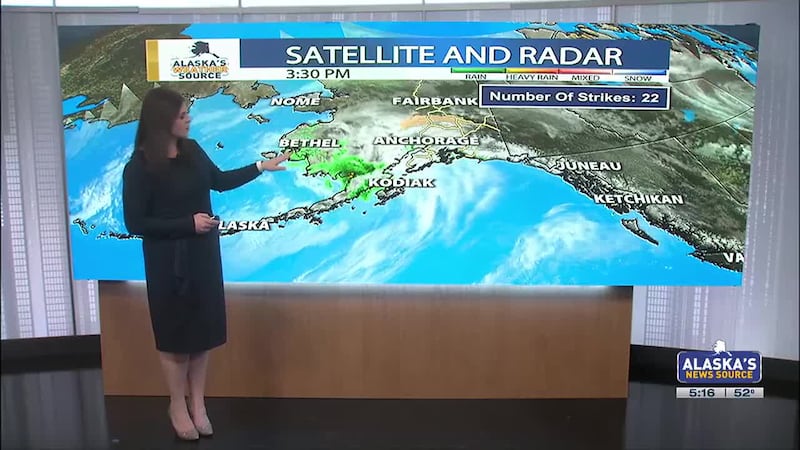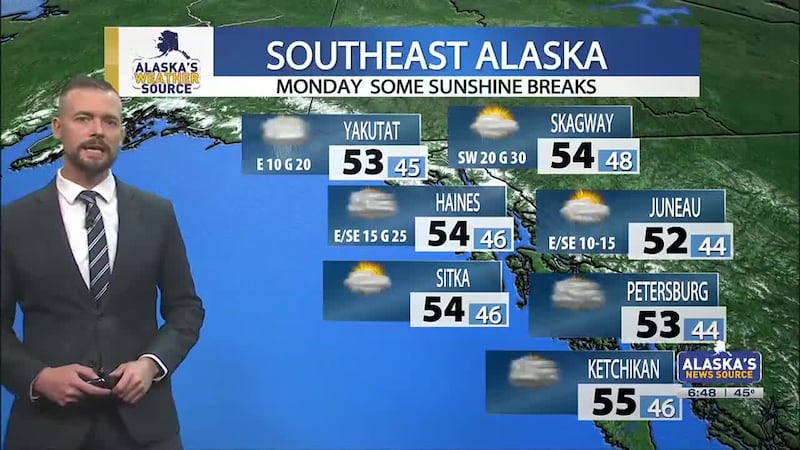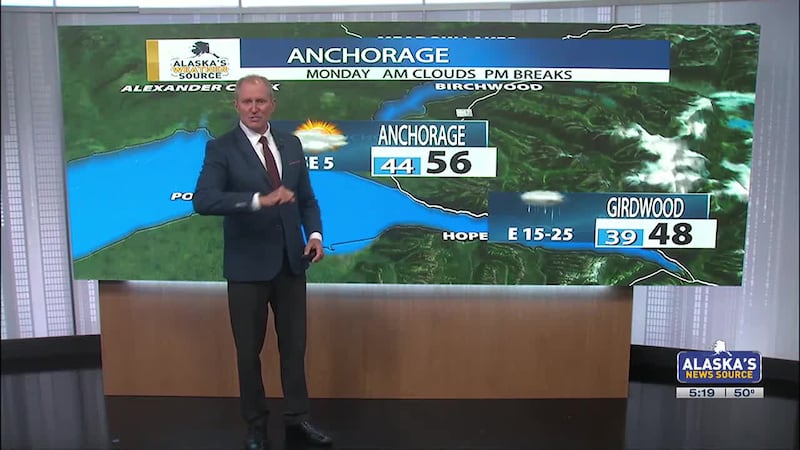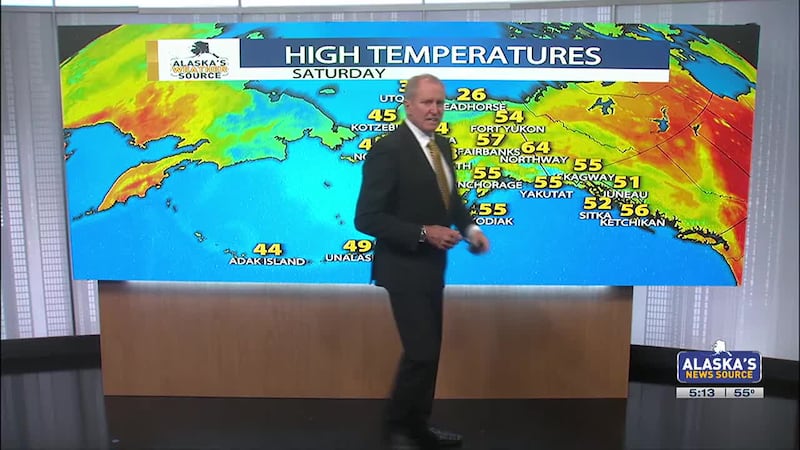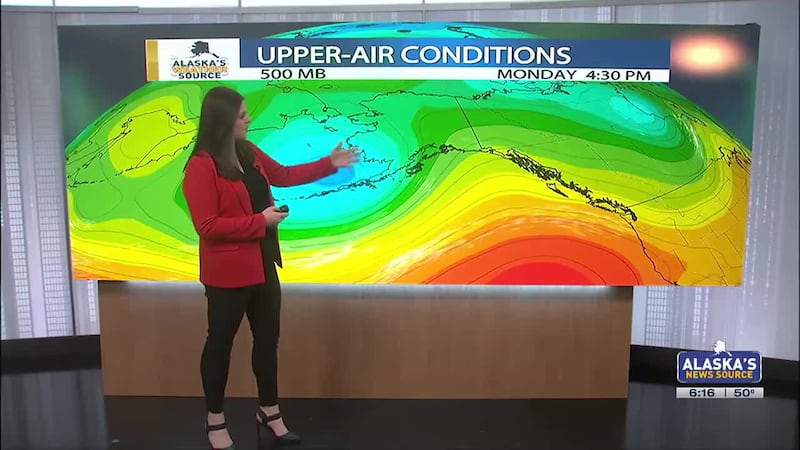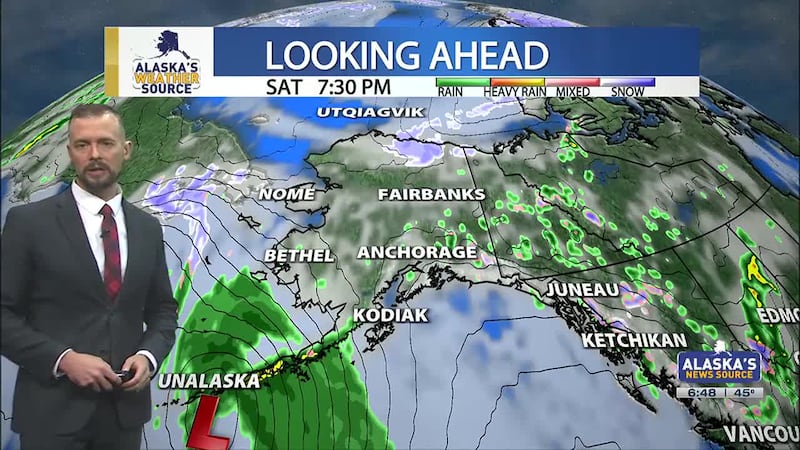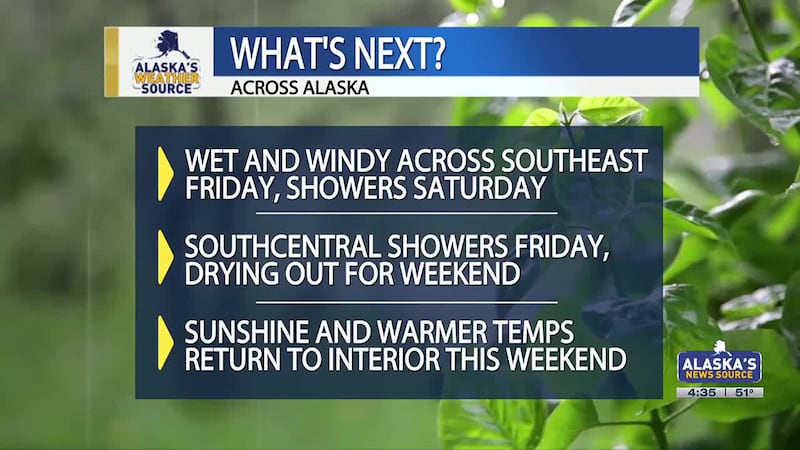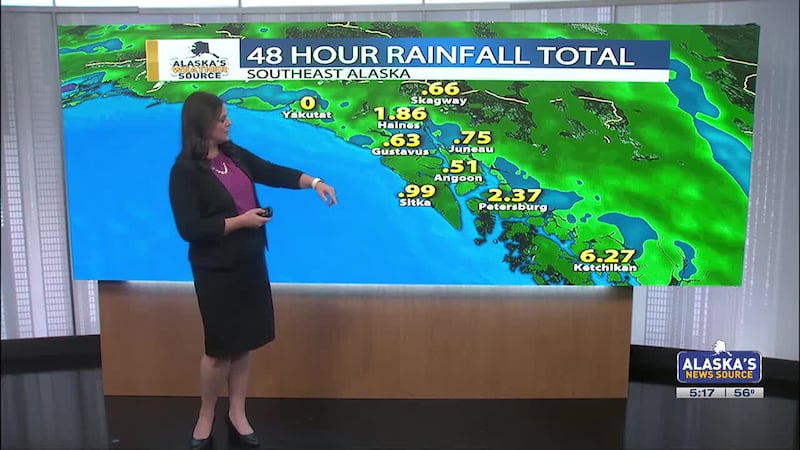Volcano Watch: Mt. Spurr eruption becoming more likely
The Alaska Volcano Observatory says the most likely eruption scenario could mirror events of 1953 & 1992.
ANCHORAGE, Alaska (KTUU) - The Alaska Volcano Observatory has seen an increase in volcanic gas emissions from Mount Spurr during flyovers in the last week.
The observatory says that new magma has intruded into the Earth’s crust beneath the volcano, which indicates an eruption is likely — but not certain — within the next few weeks or months.
The observatory stated that an exact timeframe for the eruption is unknown but that signs point to a likely eruption.
Alaska Volcano Observatory Scientist in Charge Matthew Haney says the most likely outcome is something similar to what occurred in 1953 and 1992.
“Those eruptions each lasted a few hours and produced ash clouds that were carried downwind for hundreds of miles and minor ashfall [up to about ¼ inch] on Southcentral Alaska communities,” Haney said.
The volcano is currently under an advisory, but would likely be raised to a more serious alert if more activity was detected.
“We expect to see a change in the rate and character of earthquakes, [the] onset of sustained seismic tremor, further increased gas emissions, changes in surface deformation, and melting of snow and ice prior to an eruption, if one were to occur,” Haney said. “Such stronger unrest may provide days to weeks of additional warning.”
5 p.m. Wednesday - How to prepare for a possible volcanic eruption in Anchorage
It’s not yet certain if or when an eruption of Mt. Spurr will occur, but Alaska officials are preparing for multiple scenarios in advance.
Wednesday morning, the Alaska Volcano Observatory said signs continue to point to an upcoming eruption from Spurr, citing newly-reactivated gas vents and frequent earthquake activity near the volcano.
According to AVO scientists’ expectations, the most likely scenario would feature Mt. Spurr spewing ash clouds amounting to around 1/4 of an inch, similar to eruptions from Spurr in 1953 and 1992.
Alaska agencies are preparing for the likelihood of an eruption, working in advance of a potential event to coordinate actions should one actually take place.
While the volcanic activity is being monitored, here are the health and safety precautions the Department of Homeland Security and Emergency Management recommends:
Emergency supplies:
- Basic disaster preparedness kit with food, water, medication, light sources, and supplies for basic life
- Dust masks for adults and children, such as N95 respirators
- Spare air and oil filters
- Windshield wipers and washer fluid for vehicles
- Plastic sheeting and tape to cover sensitive equipment and/or ease cleanup
Before an ashfall:
- Prepare a home emergency kit
- Store extra water if your home’s water supply is vulnerable to outages or contamination
- Cover outdoor wood piles
- Instruct family members on emergency and safety procedures
- Plan for sheltering pets/livestock
- Maintain auto emergency items like air filters, oil filters, wiper blades and fluid levels
- Familiarize yourself with or encourage your employers to create an emergency plan. Request an early release policy to allow employees to go home prior to ashfall
During ashfall:
- Monitor information from the National Weather Service
- Stay indoors, use respirators and minimize exertion if outdoors.
- Close doors, windows and dampers and eliminate draft sources
- Remove volcanic ash from wood before burning.
- Cover sensitive or valuable property with plastic sheets or bags to simplify cleanup
- Keep pets indoors as much as possible, brush or vacuum ash off after going outside
- Do not attempt to pick your children up at school, unless directed to do so. Schools will be notified of emergency procedures to take
- Do not drive unless absolutely necessary, take extreme precaution and drive slowly if unavoidable (ash is slippery, especially when wet) Use your windshield washer system anytime you must use your wipers
- If it is not possible to go indoors, get into your car and shelter in place until conditions improve
If ash were to fall, officials recommend wearing an N-95 mask and eye protection during ash cleanup.
“All disasters start locally and then we move to a statewide response, and then federal response if that’s necessary,” said Jeremy Zidek, a public information officer for the Department of Homeland Security and Emergency Management in Alaska.
Zidek said if N-95 masks aren’t available, any type of face covering is better than none. He said ash can act as an irritant to skin and eyes, and preventing contact is best.
“Ash also be very abrasive on your eyes, people with contact lenses have also mentioned that that can be kind of an irritant to their eyes,” Zidek said. “It’s recommended that you wear glasses, if you have the choice between contact lenses and glasses.”
The abrasive ash should also be cleaned up with care — the brochure created by the agencies recommends vacuuming surfaces rather than wiping — and using a fine particle filter inside shop vacs to avoid generating indoor clouds of ash.
“How this usually works is when a local community is impacted by a disaster and it overwhelms their local capability to respond, we can turn to the state,” Zidek explained. “We’ll look at the resources that we have within the state, try to address those critical needs, and then from there, if we don’t have the resources within state, we can start to ask active duty military.”
Zidek said emergency managers from the Kenai Peninsula, the Municipality of Anchorage, and Mat-Su City Borough have all been involved in preparation efforts. All three areas could be impacted depending on the conditions of an eruption.
Together, officials have put together information that can help Alaskans understand what the volcano could do, and how to prepare and protect themselves. Zidek all of the information has been collected on their website, which features a six-page long question and answers page.
9:30 a.m. Wednesday - Eruption scenario ‘likely’ for Spurr
According to the Alaska Volcano Observatory, newly reactivated fumaroles, or gas vents, were seen at the volcano’s Crater Peak vent. The volcano has accumulated magma for some months, with new gas data pointing to a new vent opening within Crater Peak. Additionally, earthquake and ground deformation continue near the volcano. The increased activity shows that an eruption is becoming more likely.
With the increased activity over the past weeks, the observatory says it is time to start preparing for a possible eruption and the ash that could be produced.
“We would recommend people start preparing by adding N95 masks, spare air and oil filters, windshield wipers, and vehicle washer fluid to their basic disaster supply kit,” Haney said.
The possible scenarios laid out by the Alaska Volcano Observatory are as follows:
- Explosive eruptions like those seen in 1953 and 1992
One or more explosive events lasting as long as a few hours, with ash clouds carried downwind and up to 1/4 inch of ashfall in Southcentral.
- Lava-forming and/or small explosive eruptions
A weaker eruption compared to 1953 and 1992 that would produce lava flows, a lava dome and possible brief eruptions. This event would have less impact further away from the volcano.
- Failed eruption
If the magma fails to reach the surface, then earthquake activity, gas emissions, and other indicators of an eruption would slowly decrease.
- Large explosive eruption
Eruptions larger than 1953 and 1992 could occur. This would result in far-reaching impacts, with a larger ash cloud and thicker ash accumulation. It’s important to note that this scenario ranks very low, as there have been no such eruptions historically for Mount Spurr.
The Alaska Volcano Observatory said that more changes — such as continued surface deformation, earthquake rate, increased gas emissions and more melting snow and ice — will need to be seen before an eruption.
Original story: Volcano eruption near Anchorage possible, but not imminent (Feb. 10, 2025)
For nearly a year Mount Spurr, an active volcano near Anchorage, has shown increased activity of unrest.
The activity could be a sign of a larger eruption coming, although Alaska Volcano Observatory scientists say more signs are needed to know if an eruption is imminent.
An advisory was issued by the Alaska Volcano Observatory (AVO) last October, as unrest grew on Mount Spurr, located just 80 miles west of Anchorage.
The mountain is monitored by an extensive seismic network, with 11 stations sending regular data.
The volcano has been consistently showing several signs of unrest, including increased earthquake activity and deformation of the surface, but gas emissions remain normal.
In its latest update, the AVO says new gas measurements were collected on Feb. 7. These measurements showed no significant changes from those taken in June and December of last year and were similar to background levels.
“So that shows some of the uncertainty in what we’re seeing now, that it is showing this unrest, but it’s not yet giving us clear indications that this will progress all the way to an eruption,” Alaska Volcano Observatory Scientist in Charge Matthew Haney said.
Mount Spurr has a history of explosive eruptions sending ash clouds to 65,000 feet. The AVO says the only known eruptions in modern history were in 1953 and 1992. In both cases, the eruption came from the Crater Peak flank vent, about two miles south of the peak’s summit.
Although the mountain has two vents where an eruption could occur, all current activity leads Haney to believe that if Spurr were to erupt, it would once again be from the crater and not the summit.
“The earthquakes we’ve been seeing over the past month are more often being located beneath Crater Peak, which is the site of the historic eruptions in 1953 and 1992. So that’s something we’re looking at very closely to see if that trend continues,” Haney said.
There is also a third, more recent, example when Spurr showed signs of unrest that ultimately faded before an eruption.
“Sometimes there can be a build-up of magma beneath the volcano but it doesn’t have enough magma to ultimately proceed all the way and produce a volcanic eruption,” he said.
Another sign of unrest that scientists are watching for is a more continuous earthquake, called a tremor, which is common with volcanic eruptions, but not yet seen on Spurr.
“So the volcano just begins to shake continuously and so that type of signal if we saw that, we haven’t yet, that would be another indicator,” Haney said.
Haney says he is fairly confident based on prior experience with Spurr and other volcano eruptions that there will be additional signs of increased activity within the volcano before an eruption if it were to occur.
“We expect, you know, more indications in our data prior to an eruption that would give us more indication that the odds were increasing of an eruption,” Haney said. “We haven’t seen those yet, but we’re looking very closely to see that if those signals are produced at Mount Spur.”
The main concern with an eruption from Spurr for the Cook Inlet region would be the ash cloud and ashfall likely produced should an explosion happen, and the impacts on aviation and travel in the area. The winds at the time would dictate what direction the ash cloud would travel.
The AVO is monitoring this volcano, along with dozens of others around the clock. You can get the latest Alaska volcano alerts and research here.
See a spelling or grammar error? Report it to web@ktuu.com
Copyright 2025 KTUU. All rights reserved.
